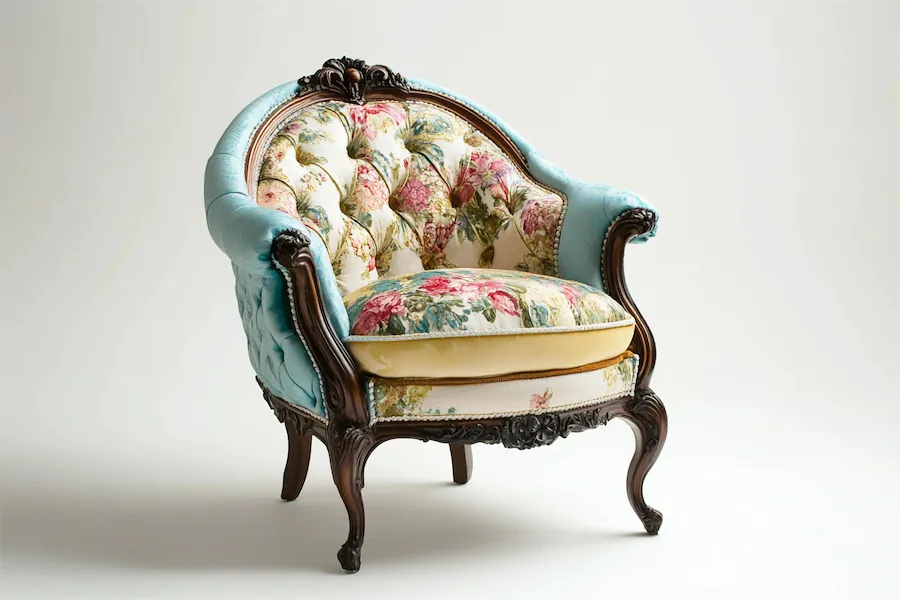French-style chairs are renowned for their elegance, intricate craftsmanship, and historical significance. Evolving through various periods, each style reflects the cultural and artistic trends of its era.
History and Origins of French-Style Chairs
The evolution of French chairs is closely tied to the reigns of different monarchs, each influencing the design aesthetics of their time:
- Louis XIV (1643–1715): Chairs from this period, known as the Baroque era, were grand and imposing, featuring straight lines, tall backs, and rich ornamentation. Gilded finishes and elaborate carvings were common, symbolizing the absolute power and wealth of the monarchy.
- Régence (1715–1723): Marking a transition, this era introduced more curves and comfort into furniture design. Chairs became less rigid, with symmetrical curves and angled legs, moving away from the formality of the previous period.
- Louis XV (1723–1774): The Rococo style flourished, emphasizing asymmetry, fluid lines, and natural motifs like flowers and shells. Chairs such as the Bergère featured upholstered backs and seats, providing enhanced comfort and a more intimate feel.
- Louis XVI (1774–1792): Neoclassicism took hold, bringing back straight lines and classical motifs. Chairs from this period often showcased fluted legs and medallion backs, reflecting a renewed interest in ancient Greek and Roman art.
Key Features of French-Style Chairs
Despite the variations across periods, French-style chairs share common characteristics:
- Ornate Carvings: Intricate woodwork featuring motifs like florals, shells, and scrolls.
- Curved Lines: Graceful silhouettes with cabriole legs and rounded backs, especially prominent in Louis XV designs.
- Luxurious Upholstery: Use of rich fabrics such as silk, velvet, and brocade, often adorned with patterns and embroidery.
- Gilded Accents: Application of gold leaf to enhance the opulence of the pieces.
Applications of French-Style Chairs
French-style chairs can elevate various interior settings:
- Living Rooms: Serve as statement pieces, adding sophistication and a touch of history.
- Bedrooms: Provide elegant seating options, complementing classic or romantic décor.
- Dining Rooms: Enhance formal dining experiences with their refined appearance.
Considerations When Choosing a French-Style Chair
When selecting a French-style chair, consider the following:
- Authenticity: Determine whether you prefer an antique piece with historical value or a reproduction that offers modern comfort.
- Condition: For antiques, assess the structural integrity and the state of the upholstery.
- Style Cohesion: Ensure the chair aligns with your existing décor and the specific French period style you admire.
Conclusion
French-style chairs encapsulate the rich artistic heritage of France, offering timeless elegance and craftsmanship. Whether as functional seating or decorative art pieces, they bring a sense of luxury and history to any space.
